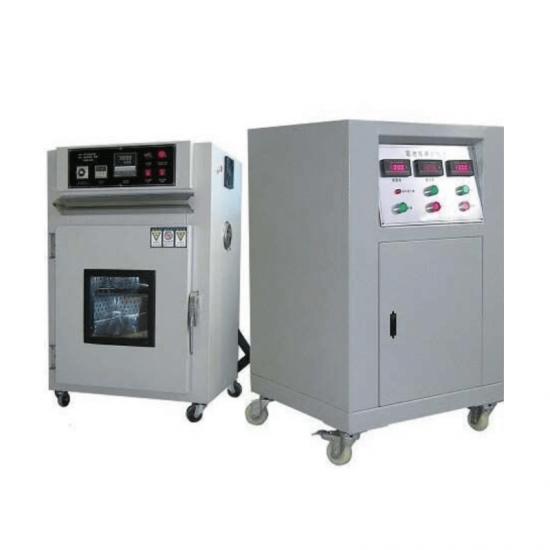Battery Explosion-Proof Tester: Safeguarding Battery Safety and Performance
A Battery Explosion-Proof Tester is an advanced testing device designed to evaluate battery safety under extreme conditions. It is used to simulate hazardous scenarios, such as overcharging, thermal runaway, or physical damage, to ensure that batteries can safely withstand such stresses without causing explosions or fires. This equipment is critical for testing lithium-ion, lithium polymer, and other battery types used in applications like consumer electronics, electric vehicles (EVs), and renewable energy systems.
● Purpose of a Battery Testing Equipment
The primary goal of a Battery Explosion-Proof Tester is to assess and improve battery safety. As energy density increases in modern batteries, the potential for catastrophic failures rises. The tester helps to:
1. Identify Weak Points
- Determine vulnerabilities in battery design or materials that could lead to safety hazards.
2. Ensure Compliance
- Meet international safety standards such as UL, IEC, and UN38.3 for battery certification.
3. Protect End-Users
- Minimize risks of explosions or fires during battery use, transport, or disposal.
4. Support Innovation
- Test new chemistries and designs under controlled conditions to advance battery technology.
● Features of a Battery Explosion-Proof Tester
1. Explosion-Proof Enclosure
- A reinforced chamber capable of withstanding high-pressure explosions, preventing damage to surrounding environments.
2. Multi-Scenario Testing
- Simulates diverse failure conditions, such as overcharging, over-discharging, short-circuits, and punctures.
3. Real-Time Monitoring
- Equipped with sensors to measure temperature, pressure, gas emissions, and voltage in real-time.
4. Automated Safety Controls
- Includes emergency shutoff systems, fire suppression mechanisms, and controlled ventilation for handling hazardous events.
5. High Precision Data Logging
- Records key parameters for detailed analysis, aiding engineers in identifying failure mechanisms.
6. Customizable Test Protocols
- Allows tailoring of test conditions to accommodate different battery types, chemistries, and sizes.
● Typical Testing Scenarios
1. Thermal Testing
- Exposing batteries to extreme heat to simulate conditions like overheating or external fires.
2. Mechanical Abuse Testing
- Includes puncture, crush, and impact tests to replicate physical stress during transportation or accidents.
3. Electrical Abuse Testing
- Simulates overcharging, over-discharging, and short-circuits to evaluate electrical stability.
4. Gas Emission Analysis
- Monitors toxic and flammable gases released during battery failure, such as hydrogen and carbon monoxide.
5. Severe Environmental Conditions
- Tests battery resilience under extreme humidity, altitude, or vibration conditions.
● Applications of a Battery Explosion-Proof Tester
1. Consumer Electronics
- Ensures safety of batteries in devices like smartphones, laptops, and wearables.
2. Electric Vehicles (EVs)
- Validates safety of large-format batteries used in EVs under crash or thermal runaway scenarios.
3. Energy Storage Systems (ESS)
- Tests durability and safety of batteries in grid-scale applications.
4. Aerospace and Defense
- Evaluates high-performance batteries for drones, satellites, and military equipment.
5. Battery Manufacturing
- A critical tool for quality control in production lines to identify defective units.
6. R&D and Prototyping
- Used by researchers to test new battery chemistries and materials during development.
● Industry Standards for Explosion-Proof Testing
1. UL 1642: Safety for lithium-ion batteries.
2. IEC 62133: Safety requirements for portable sealed secondary cells.
3. UN38.3: Standards for lithium battery transport testing.
4. SAE J2464: Abuse testing for EV and hybrid vehicle batteries.
5. GB Standards: Chinese battery safety standards.
● Advantages of Battery Explosion-Proof Testers
1. Enhanced Safety
- Prevents real-world incidents by identifying potential hazards early.
2. Regulatory Compliance
- Streamlines the certification process for global markets.
3. Innovation Support
- Accelerates the development of safer, higher-performing batteries.
4. Data-Driven Decisions
- Provides detailed insights to optimize battery design and materials.
5. Environmental Protection
- Minimizes risks of hazardous gas leaks or chemical spills during testing.
● Innovations in Explosion-Proof Testing
1. AI and Machine Learning Integration
- Predicts potential failure points based on testing data.
2. Advanced Sensors
- Measures nano-level changes in temperature, pressure, and chemical composition.
3. Eco-Friendly Testing Chambers
- Designs that contain and safely process toxic gases for reduced environmental impact.
4. Multi-Chemistry Compatibility
- Accommodates emerging technologies like solid-state and sodium-ion batteries.
● Choosing the Right Tester
When selecting a Battery Explosion-Proof Tester, consider:
1. Battery Compatibility
- Ensure the tester can handle the sizes and chemistries relevant to your application.
2. Testing Capabilities
- Look for flexibility in simulating different failure conditions.
3. Safety Features
- Check for robust enclosures, fire suppression systems, and emergency protocols.
4. Data Analysis Tools
- Opt for testers with advanced data logging and diagnostic software.
5. Scalability
- Choose a system that can grow with your needs, whether for lab testing or production lines.
● Conclusion
A Battery Explosion-Proof Tester is a vital tool for advancing battery safety and reliability in a rapidly growing energy market. By rigorously evaluating batteries under extreme conditions, this equipment ensures the development of safer energy storage solutions while complying with industry standards. As battery applications expand, explosion-proof testers will play an increasingly pivotal role in fostering trust and innovation in energy technologies.




 Online service
Online service
